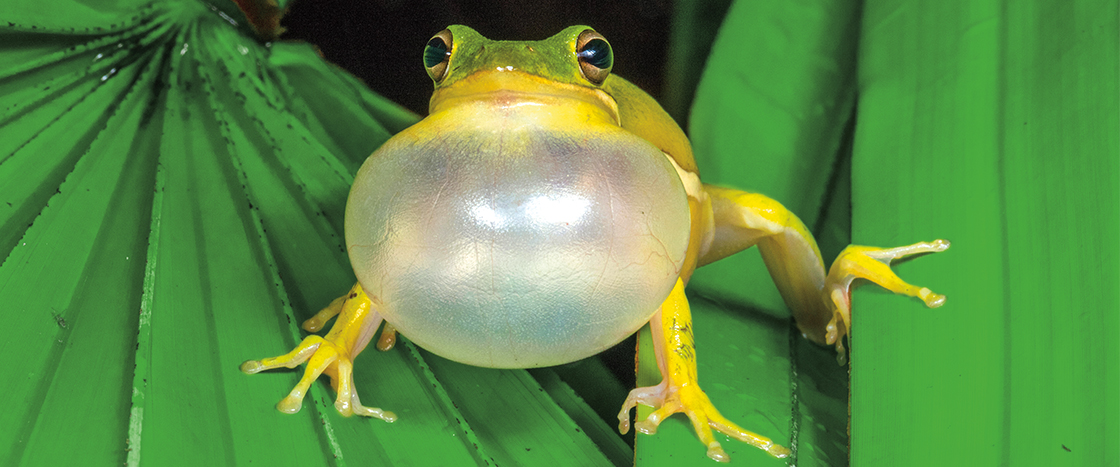On a quiet spring evening in St. Louis, Missouri, Ann Earley grabs a flashlight and heads out the door. Down the street, she arrives at the edge of a small tree-lined pond. She stops, checks the time, and listens.
Earley isn’t out for a casual stroll—she’s here on a scientific mission. She’s a citizen scientist with FrogWatch USA, a project run by the Association of Zoos and Aquariums. Every year between February and August, FrogWatch volunteers around the U.S. write down the frog calls they hear in their area. The data they collect helps scientists monitor frog populations.
It’s important work because frogs around the world are in trouble. About one-third of all amphibians, including frogs, are at risk of becoming extinct. With the help of volunteers like Earley, scientists hope to stop that from happening.
Ann Earley grabs a flashlight. She heads out the door. It’s a quiet spring evening in St. Louis, Missouri. Earley walks down the street. She stops at the edge of a small pond. She checks the time and listens.
Earley isn’t out for a stroll. She’s here on a scientific mission. She’s a citizen scientist. She’s helping with FrogWatch USA. It’s a project run by the Association of Zoos and Aquariums. FrogWatch volunteers live across the U.S. They help out every year between February and August. They write down frog calls they hear in their area. Scientists use the data. It helps them monitor frog populations.
It’s important work. That’s because frogs around the world are in trouble. Frogs are amphibians. About one-third of this group of animals is at risk. They could become extinct. Scientists hope to stop that from happening. And volunteers like Earley are helping.

